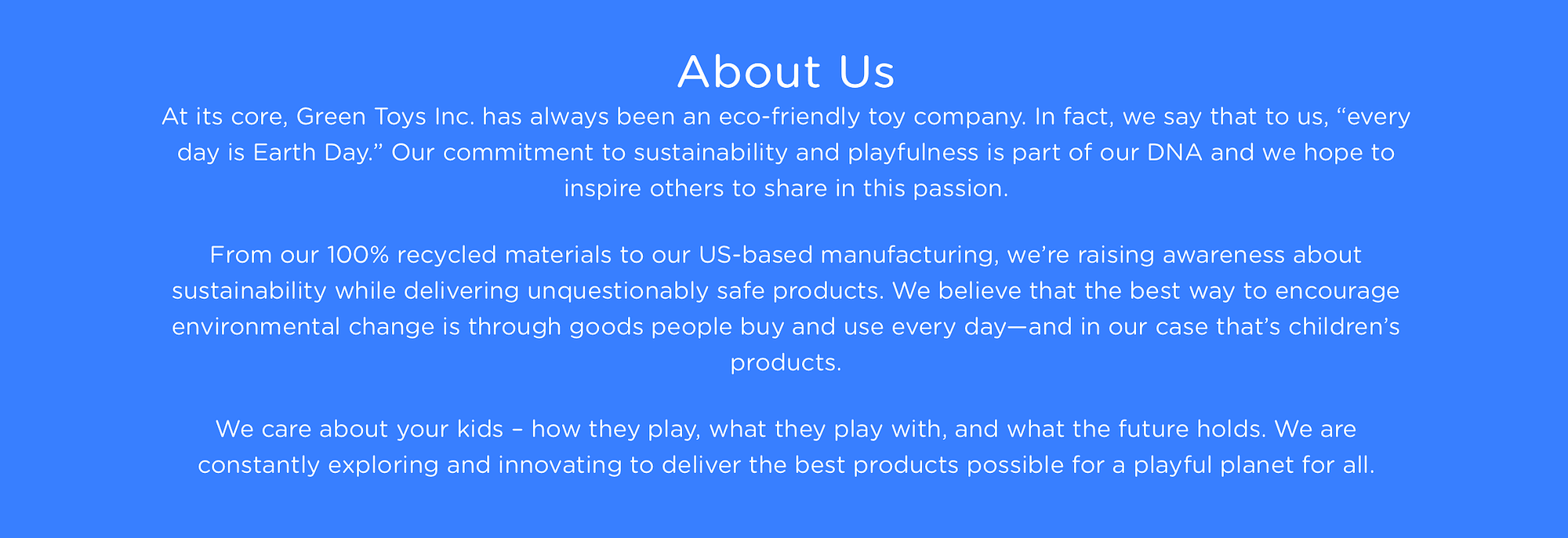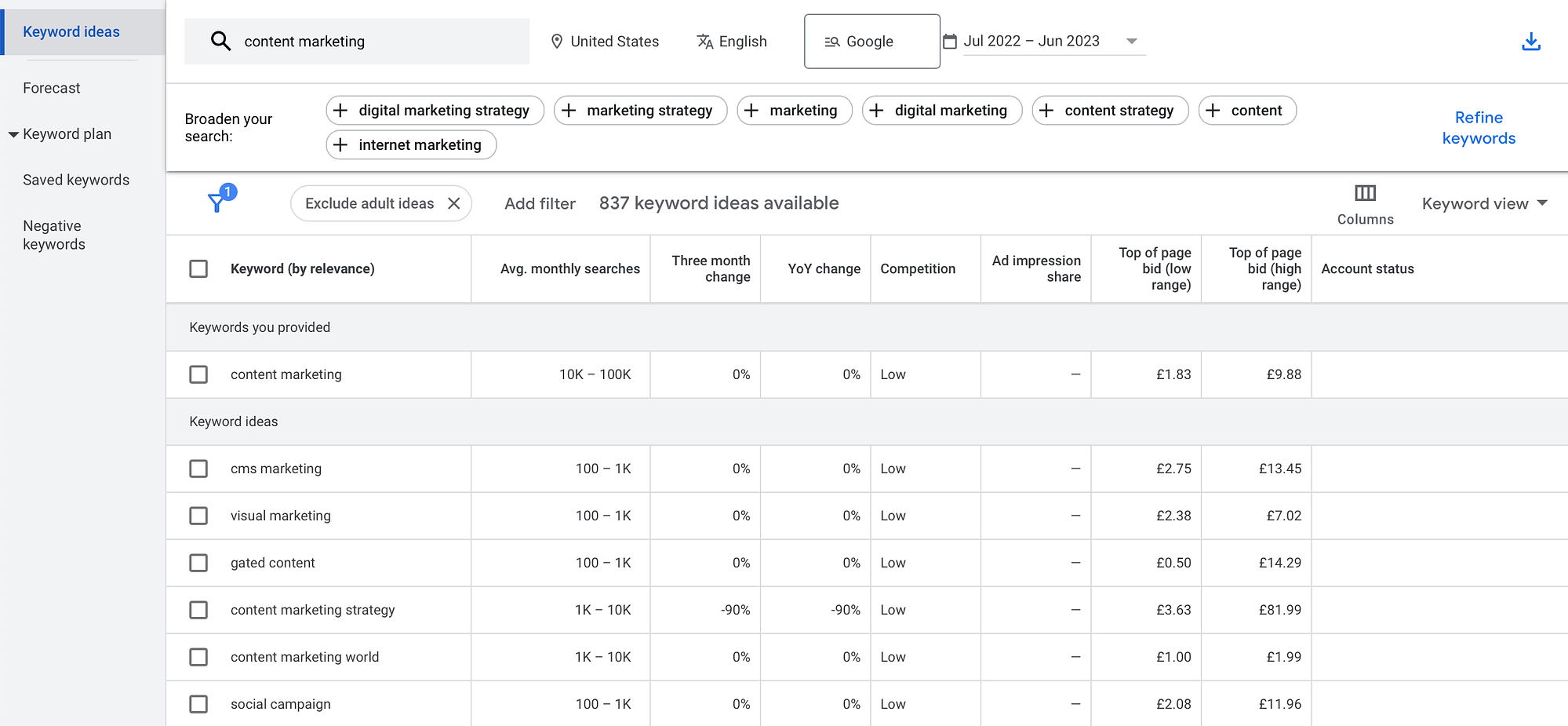Creating content for your website, blog, or social accounts might seem like a simple task. However, without proper planning and consistency, you’re unlikely to achieve your content goals. Therefore, if you’re a new or growing business, you might be wondering how to create a content marketing strategy.
Fortunately, our step-by-step guide will show you how to create a content marketing strategy. You’ll start off by choosing your ultimate content goal. Then, you can develop your brand story, create a content calendar, and evaluate your content against Key Performance Indicators.
What is a content marketing strategy (and why do you need one)?
A content marketing strategy is an efficient way to create, organize, and manage your content. You’ll design your strategy around one (or more) key goals. This way, all your content will have a clear purpose, so it’s more likely to result in success.
For example, you might be a new business that wants to focus on building brand awareness. In this instance, you can create a content strategy that focuses on SEO (Search Engine Optimization) and social media to gain more exposure.
One of the reasons why a content marketing strategy is essential is because, without one, you’ll be posting new content when (and if) it suits. As such, you might produce lots of new content when you’re full of great ideas.
However, once your inspiration wanes, you might go long periods of time without publishing new posts. This makes it difficult for new audiences to trust your brand. Plus, it’s much harder to build relationships with existing customers.
Meanwhile, as we mentioned, a content strategy is usually a long-term effort to achieve your business goal(s). So, if you’re looking to convert more leads, you might create an email campaign to deliver to customers’ inboxes.
In order for this to be successful, you’ll need to map out exactly what you want to achieve within each email. Plus, you’ll need to decide when (and how often) to make contact. All of this will be part of your content marketing strategy.
How to create a content marketing strategy (in 8 steps)
Now that you know why it’s important to create a content strategy, we’re going to show you how to create a content marketing strategy in a few simple steps.
- Define your ultimate goal
- Create audience personas
- Develop your brand story
- Identify key platforms
- Establish a content calendar
- Research topic ideas
- Create valuable content
- Regularly evaluate content against KPIs
1. Define your ultimate goal 💡
If you’re wondering how to create a content strategy, the first step is to define your ultimate content goal. For example, if you’ve just set up your business (or you’re undergoing a rebranding), it can be a good idea to focus on building brand awareness.
However, for more established businesses, you might want to generate more leads, increase conversions, or boost sales. Depending on your goal, your content, platforms, and schedule may look different.
You can choose more than one goal to pursue, but make sure that it’s clear and achievable. Plus, it’s important to make sure that the goal ties in with your overarching business goal(s).
One of the other reasons to define a clear goal is because it helps you measure the success of your content strategy. For example, after a certain number of weeks (or months), you can clearly identify whether you’ve achieved what you set out to do.
2. Create audience personas 🧔🧑
In order to create a successful content strategy, it’s important to develop audience personas. This way, you can make sure your content is relevant (and valuable) to your visitors, so it’s more likely to have an impact.
If you’re not sure who your target audience is, you can conduct some market research. Plus, you can take a look at your current customer segments, paying close attention to demographics and contact trends.
Fortunately, there are tons of free tools to help you research your audience personas. For example, you can compile audience data from social media analytics (like Facebook Audience Insights).
👉 Or you can use Google Analytics:

Then, hone in on details like age, location, language, spending patterns, pain points, and more.
Once you understand who you’re selling to, you’re able to position your products or services as the solution to their problems. Then, you can implement this problem-solution structure within your content.
3. Develop your brand story 🧑💻
Now that you’ve defined your goal and created audience personas, you’re ready for the next step in how to create a content marketing strategy: developing your brand story. No matter what niche you occupy, you’ll always have competition. Therefore, it’s important to distinguish your brand and give customers a clear reason to choose you.
There are multiple ways to develop a brand story. To start with, you can create a narrative around the problem and the solution. You can show readers that you understand their pain points, and position your content (or products) as the solution.
Additionally, it’s useful to think about what makes your brand unique. For example, you might produce sustainable products in eco-friendly packaging:

Or, you might sell hand-made products that are exclusive to your region. Then, you can weave this messaging into your brand story.
Lastly, your brand story might reside in your background or experience. For instance, you can tell readers where the idea for your products came from:

Or, you can mention important events and experiences that altered your brand’s journey. This can humanize your business and help readers connect with your content.
4. Identify key platforms ⌛
With your audience personas fresh in mind, you’re able to identify the key platforms where you’ll post your content. Of course, you can post on every channel. However, to increase your chances of success, it’s best to focus on three channels where your audience is most active.
For example, as of April this year, roughly 38.5 percent of TikTok’s global audience were people aged 18–24. Meanwhile, the largest group of Facebook users were men aged 25–34 [1, 2].
Besides thinking about your audience, it’s also useful to consider the purpose of your content when choosing your platforms. If you want to gain lots of exposure, Facebook is ranked as the most popular social site [3]. Meanwhile, if you’re serving a professional audience, LinkedIn is a great option.
5. Establish a content calendar 📅
As we’ve discussed, one of the benefits of creating a content marketing strategy is that it ensures that you stick to a consistent posting schedule. This shows readers that you’re constantly creating fresh content. Plus, it can be easier to build trust and establish yourself as an authority.
However, it’s important to make sure that your content calendar is sustainable. With that in mind, it may be best to start small.
For example, if you’re new to content creation, you might commit yourself to just one post a week. Then, as you become more familiar with the process and the platforms, you can increase your output.
Additionally, you’ll need to account for posting across multiple channels if you’re using more than one platform within your strategy. In this instance, you might decide to publish a new blog post on your website each week. Then, create two short social media posts across your preferred social networks.
6. Research topic ideas 🔎
Next up in our tutorial on how to create a content marketing strategy is to research topic ideas. There are tons of ways to do this.
👉 For example, keyword research is a useful method to come up with ideas for your blog. To get started, you can use a tool like LowFruits or Google Keyword Planner:

This way, you can identify key terms and phrases that real users are searching for. Then, you can incorporate these terms into your content to gain more visibility in search engine results.
What’s more, it’s a good idea to check out forums like Quora or Reddit to find the most frequently asked questions within your niche. Meanwhile, if you want to write about current events or trending topics, social media is a great option since it’s constantly updated.
Alternatively, news websites can be useful to keep an eye on. Or, you can even take a look at your competitors blogs and social media accounts. This way, you might be able to find a new angle on a post or offer a more in-depth look at a certain topic.
7. Create valuable content ✍️
With your topic ideas prepared, you’re ready to start creating valuable content. While social media is great for short-term content and video, you might want to set up a Content Management System (CMS) to create and manage your blog content.
👉 WordPress is an excellent option since it’s open-source and free:

Plus, you can get set up with a quality web hosting provider that will install WordPress automatically.
Then, you can create web pages for your products and services. Meanwhile, you’ll add new posts to publish articles, reviews, tutorials, and more.
If you want your content to stand out to users (and search engines), it’s important to make sure that it’s valuable. So, if you’re implementing keywords within your post, make sure that your content matches the keyword accurately.
Additionally, if it’s helpful for readers, you can link to other pieces of content on your blog or include a call-to-action to relevant products or services. Plus, to make your content more readable, include plenty of images and break chunks of text up with headings and subheadings.
8. Regularly evaluate content against KPIs ⚙️
Once you’re regularly posting content, it’s important to measure the success of your marketing strategy. To do this, you’ll need to identify some KPIs to help you evaluate your content.
For example, if you’re trying to boost engagement, your Key Performance Indicators might be the average number of comments per post or the number of social shares. Meanwhile, if you want to track conversions, you should look at the number of visitors who subscribed to your newsletter.
What’s more, if you’re a new business, you can keep an eye on KPIs like referral traffic to understand where most of your visitors are coming from. Or, track follower growth across your social channels.
Then, once you’ve collected enough data, you can use your findings to improve your content marketing strategy. For instance, if you’re attracting plenty of visitors but you’re not generating many leads, you might need a stronger CTA.
Final advice on how to create a content marketing strategy 🎯
A content marketing strategy enables you to consistently publish goal-oriented content that delivers value to your readers. By implementing greater structure and organization within the content creation process, you can build trust with new audiences and gain authority.
To get started, you’ll need to define your ultimate content goal and create audience personas. Then, you can identify your main platforms and come up with some topic ideas. By which point, you’re ready to create quality content and evaluate it against KPIs to improve your overall strategy.
Do you have any questions about how to create a content marketing strategy? Let us know in the comments below!